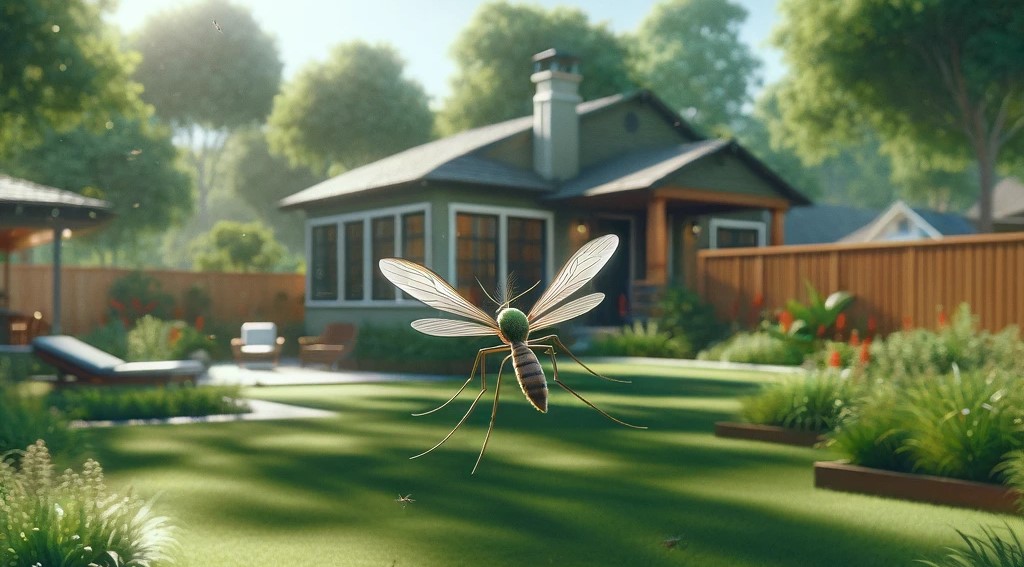
Here are some common misconceptions about pest control that many people have:
- One Treatment Is Enough: Many believe that a single treatment will eliminate a pest problem, but effective pest control often requires ongoing monitoring and multiple treatments. Around Canyon Lake and New Braunfels the scorpions are so prevalent that one treatment does not even begin to eliminate or control them. Sometimes monthly service is needed just to gain control of the high populations of certain insects and arthropods!
- DIY Methods Are Always Effective: While DIY pest control can be helpful for minor issues, many infestations require professional intervention for effective resolution. Certain pests like termites, German roaches, chiggers, fleas, ground hornets, and others require professional products and equipment. Anyone can grab a can and go to spraying, but a professional knows where and how to apply products, as well as how to eliminate the issues. Knowing the biology and life cycles of the pest is part of controlling them.
- Pest Control Is Only for Infestations: Some think pest control is only necessary when there’s an obvious infestation, but preventive measures are equally important. Trimming trees, shrubs and vegetation away from the foundation keeps certain pests from infesting in most instances. Many pests can be prevented just by using Integrated Pest Management (IPM) techniques. Exclusion, habitat modification, and excess moisture remediation are all super effective pest control strategies that can be implemented at any time whether there is an infestation or not.
- All Pest Control Products Are Safe for Humans and Pets: Not all pest control products are safe; some can pose health risks if not used correctly. It’s crucial to read labels and follow instructions. As a pest control operator, we are taught to not use the “safe” word. When properly applied by a trained, licensed professional in accordance with the label, there is very little risk to the applicator and customer. There are some very unsafe ingredients in pet shampoos and flea collars.
- Pest Control Means Chemical Sprays: Many people believe pest control is solely about chemical pesticides. Integrated Pest Management (IPM) includes non-chemical methods, such as habitat modification and biological controls. Fleas can be controlled with vacuuming frequently and bathing pets with dish soap, so a chemical application is not always needed. Modifying the habitat is the most natural, eco-friendly way to control pests while maintaining safety, but not always possible.
- Baits and Traps Are Ineffective: Some assume that traps and baits won’t work, but they can be very effective when used properly and in the right locations. I like to use glue traps for catching scorpions as they enter a building. These also catch spiders, pillbugs, centipedes, roaches, and whatever pests may be entering through the doors. They can also be placed in hiding spots like closets where spiders dwell. Baits are very effective for ants and roaches.
- Pests Only Come Out at Night: While some pests are nocturnal, many, like ants and cockroaches, can be active during the day as well. Wasps are only active during the daytime also. Depending on the temperature I have seen scorpions out during the day and a few centipedes in garages or flower beds.
- Using More Pesticide Equals Better Results: Many believe that using more pesticide will lead to better control, but this can be wasteful and potentially harmful. Proper application is key. The manufacturers test their products and determine the smallest amount needed to be lethal for the bugs it is designed for. Even if you triple the concentration and over-apply, it will not be more effective than the recommended dose. The same goes for mixing products together thinking they will be more effective. It usually makes no difference.
- All Bugs Are Harmful: Not all insects are pests; many are beneficial for ecosystems and help control other pest populations. In my opinion there are no harmful bugs or insects. They are all here to be food for something or eat something. Insects may pollinate, decompose, and do other nature cleaning tasks that help the environment. They all have a place and we should try to keep the ecosystems as natural as possible with proper pest control techniques.
- Once the Pests Are Gone, the Problem Is Solved: People often think that removing pests means they won’t return. Effective pest management involves identifying and addressing the conditions that allowed them to thrive in the first place. Excess moisture, overgrown landscaping and environmental factors or even just homes getting older and leakier can lead to future infestations. Pest control always has to be maintained if the results are to be long-term. In a couple of months most pest populations can rebound and become an issue, so it’s never a permanent elimination.
- Natural Remedies Are Always Safer: While some natural remedies can be effective, they can also have risks and may not be as effective as professional solutions. I use a botanical product in my rotation for wasps. It is very effective for wasps and is decent against other insects, but only lasts about 7 days. Essential oils have risks for humans and animals, so always research and use caution when turning to them for DIY use.
- Pest Control Is Only for Homes: Businesses, schools, and other public places also need pest control, but many people think it’s only a home issue. Any place that people visit or live could potentially need pest control at some point. Wasps can fly right? That means they can invade anywhere on the planet!
- Professional Pest Control Is Too Expensive: Many underestimate the value of professional services, believing they can handle issues themselves without realizing the long-term costs of untreated infestations. Some customers have said they wasted a lot of money of products that did not work, did not work long enough, or did adequately eliminate their pests. If cost is a concern most companies like us offer payments plans for quarterly service, so instead of paying for 4 services you spread the cost of those services out over 12 months so they are under $35 a month for most homes!
- Pests Are Attracted to Dirty Environmments Only: While cleanliness helps, pests can invade even well-maintained spaces, as they seek food, water, and shelter. If you have a home, then you can have pests. They like super nice houses just like we do, they just show up without an invitation! Anyone can get roaches at any time, from wet weather, coming in at night by the lights, or if they are brought in from a grocery store.
- You Can’t Prevent Pests: Some people believe pest problems are unavoidable. However, with proper sanitation and preventive measures, many pest issues can be significantly reduced. I have numerous customers who have had their scorpion issues almost completely resolved by sticking with their regular service plan. Over time it just gets better and control is easier than in the beginning. Give us a call and see for yourself!




